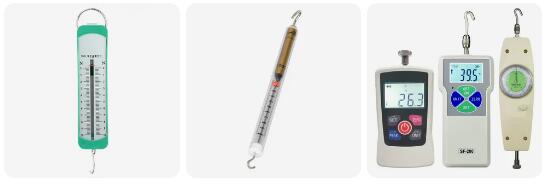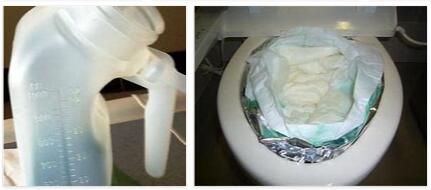A dynamometer is a tool that, based on the changes in the elasticity of a spring with a certain calibration, allows the weight of a body to be calculated or a force to be measured.
This device was invented by Sir Isaac Newton (1643-1727) based on Hooke ‘s law, taking the limits of measurement through the ability of a spring to stretch.
With the spring sheltered inside a cylinder, the dynamometer usually has a pair of hooks (one on each of its ends). On the hollow-type cylinder around the spring, on the other hand, the scale with the corresponding units appears. When a force is applied to the hook on the outer side, the cursor on that end moves on the scale and points to the value.
The dynamometer can have a specific design according to its application. This instrument can be used to weigh something and know its mass. In this case, the dynamometer must be calibrated each time it is moved due to changes in the link between mass and weight.
Materials under stress can also be measured through dynamometers to find out how much they deform. Even in the field of orthodontics, dynamometers can be used to establish which forces are applied in the treatment.
It is worth mentioning that the scale in which said measurement is carried out is indicated in Units of force and the operation is quite simple. When hooking two weights or exerting a force on the outer hook, the needle on that side moves towards the outer scale and indicates the value of the force that has been exerted.
Its operation is related to the third law of physics exposed by Newton that says that every action has a reaction; therefore, whenever two bodies A and B interact, with body A experiencing a force either by contact, magnetic or gravitational interaction, body B will experience at the same moment a force of similar magnitude but in the opposite direction.
The dynamometer can have various uses, here we present some of them:
* Measure the weight of an object and also be able to obtain its mass. In this case, each time it is used, the dynamometer must be calibrated again because the relationship between mass and weight varies according to the element to be weighed;
* Apply in the testing machines of a laboratory. To measure the specimens or the deformation of the same in a tensile test or the penetration of a hardness test;
* Measure forces applied during a specialized treatment, mainly used in orthodontics.
One of its fundamental characteristics is that they have measurement ranges that go from a few Newtons to hundreds of kilonewtons.
There are two types of dynamometers: mechanical or electronic. The former are the most used because they are estimated to be the most accurate, presenting a maximum deviation of ± 0.3% of the load. For example, Mecmesin’s mechanical dynamometers are suitable for solving practical questions without requiring electrical current. They are recommended above all for environments where there may be sparks or places where it is necessary to ensure safety.
Differences between dynamometers and balance
It is important to distinguish between the dynamometer, which measures forces, and the balance, which measures masses. However, some objects known as balances are actually dynamometers, since they work by means of springs that extend or compress. That is the case of the kitchen scale that is used to weigh food.
To explain it more clearly, the dynamometer measures the weight of a body, which means that it marks the force with which the object is attracted by the gravity field, while the balance measures the mass, that is, the amount of matter it contains said body. In other words, if you were to take both measurement objects to the top of a mountain or to the moon, the measurement marked by the dynamometer would differ in one place and another, while that of the balance would not.



